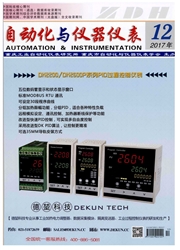

 中文摘要:
中文摘要:
针对传统的PLC编程方式在解决复杂控制问题时存在的缺陷,采用一种将形式化和信号解释Petri网(SIPN)应用于PLC程序设计的方法。通过一个机器人焊接单元的例子来说明这一设计过程,首先建立系统控制算法的信号解释Petri网模型,验证其是否满足基本Petri网的安全性、活性和可逆性的特征,然后利用模型检测工具Cadence SMV对系统模型进行验证和确认(V&V),检验其是否满足SIPN的确定性、终止性和输出正确性,从而避免了控制算法的设计过程中可能出现的并发、冲突和死锁等事件,由此设计出具有更高的正确性和可靠度的PLC程序。
 英文摘要:
英文摘要:
To overcome the defects in traditional PLC programming, an approach combined formal methods with Signal Interpreted Petri Net (SIPN) is presented. An example of robot welding unit is used to illustrate this process. This paper builds a model of the control algorithm with Signal Interpreted Petri Net first, and verifies whether it satisfies the safety, liveness and reversibility characteristics of basic Petri net. Then it uses the model checking tool Cadence SMV for model verification and validation, to test whether it meets the properties of certainty, termination and output correctness. Thus the possible events like concurrency, conflict and deadlock in control algorithm designing process can be avoided and correct and dependable PLC programs are designed.
 同期刊论文项目
同期刊论文项目
 同项目期刊论文
同项目期刊论文
 期刊信息
期刊信息
